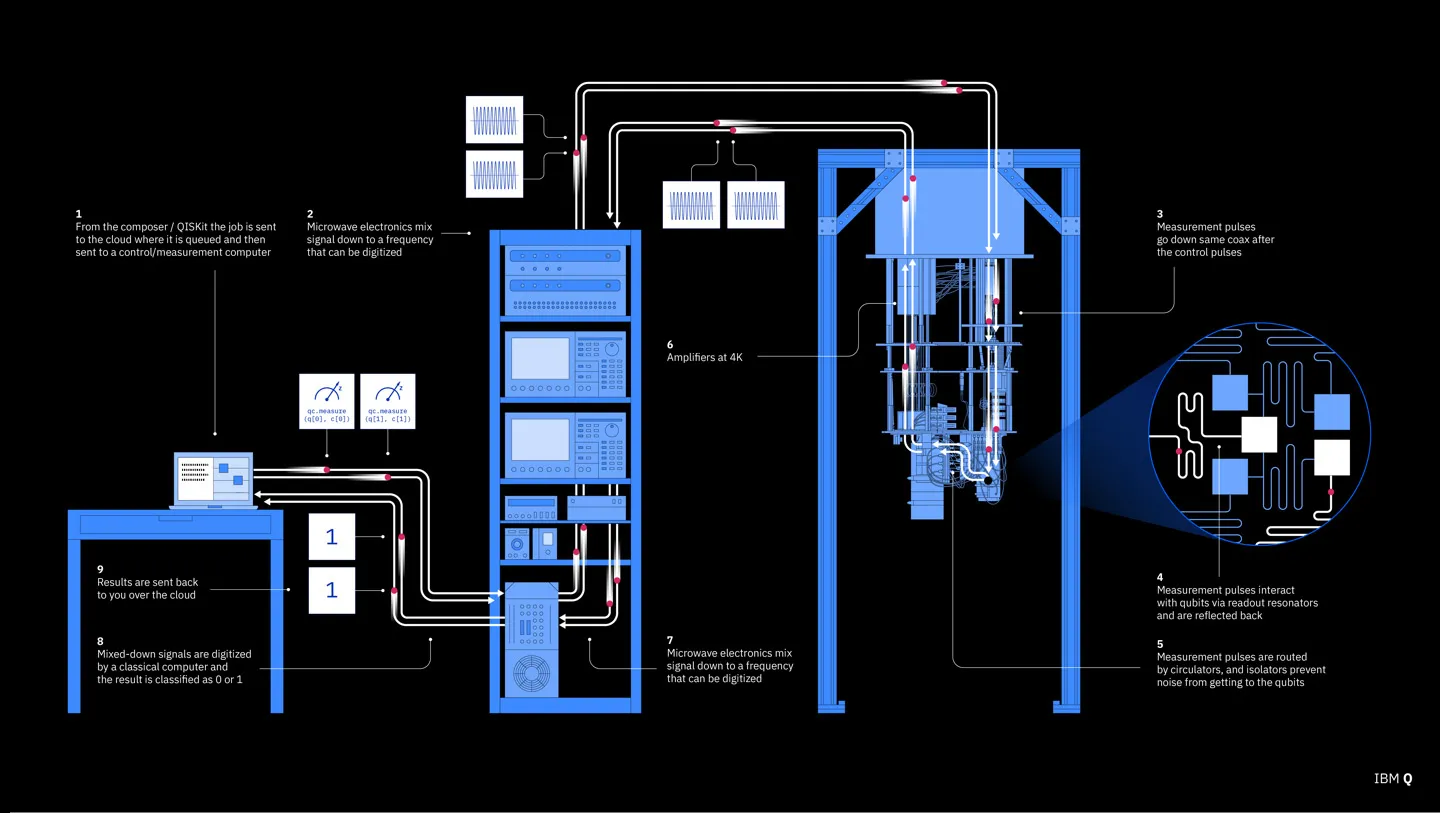Current Application Models of Superconducting Quantum Computers
Introduction to the Principles of Superconducting Quantum Computing
Superconducting quantum computing is a hardware design that uses superconducting circuits to implement qubit-based computation. At its core, it utilizes the zero-resistance property of superconducting materials at extremely low temperatures (near absolute zero) to construct highly controllable quantum systems. These superconducting circuits—typically composed of capacitors, inductors, and a key nonlinear component called the Josephson junction—are engineered as "artificial atoms" with discrete energy levels that encode quantum information into the ground state \( \ket{0} \) and excited state \( \ket{1} \).
The computational power of superconducting quantum computers originates from the fundamental principles of quantum mechanics. Quantum superposition allows a qubit to be in a combination of \( \ket{0} \) and \( \ket{1} \), unlike classical bits which can only be 0 or 1. Quantum entanglement describes a non-classical correlation between multiple qubits, such that measuring one instantly affects the others, regardless of distance. By precisely controlling the evolution of quantum states and leveraging quantum interference to amplify desirable outcomes while suppressing undesired ones, quantum computers can achieve exponential computational advantages over classical computers in certain problems.
This potential for unprecedented computational power makes superconducting quantum computing highly promising across various fields—including cryptography (e.g., breaking current encryption with Shor’s algorithm), AI and optimization (e.g., accelerating machine learning), materials science (e.g., simulating molecular structures and chemical reactions), and solving complex optimization tasks (e.g., supply chain optimization and financial modeling).
The Importance of Hardware Infrastructure
Hardware serves as the physical foundation of quantum computing. Its complexity and precision directly determine the performance, stability, and scalability of a quantum computer. A full superconducting quantum hardware stack is a massive and intricate system engineering challenge that requires interdisciplinary integration—spanning fundamental physics (understanding quantum phenomena), materials science (developing low-loss superconductors and dielectrics), semiconductor fabrication (precise patterning of nanostructures), microwave engineering (designing high-frequency control/readout circuits), cryogenics (maintaining ultra-low temperatures), vacuum technology (shielding from environmental noise), and computer science (developing control software and algorithm interfaces).
Constructing and operating superconducting quantum hardware involves many challenges. The foremost challenge is maintaining qubit coherence. Quantum states are extremely fragile and susceptible to environmental noise—such as thermal fluctuations, electromagnetic interference, and mechanical vibrations—leading to decoherence and loss of information. Thus, quantum processors must operate at near-absolute-zero temperatures with strong electromagnetic shielding and vibration isolation. Additionally, precise control systems must generate microwave pulses at femtosecond to nanosecond scales to accurately implement quantum logic gates. The readout system must be able to rapidly and accurately measure the final state of a qubit with minimal disturbance, often requiring ultra-low-noise amplifiers to process weak signals. Another key challenge is the transmission of control and readout signals between room-temperature electronics and the millikelvin quantum chip, which demands specially designed, low-loss, thermally isolated, high-density cabling and connectors. Each element of this hardware infrastructure is critical to the overall performance of the quantum computer. In the following sections, we will examine each key component in detail.
▲As superconducting quantum computers are still under development, they require operation at near-absolute-zero temperatures. A prototype machine is extremely large and expensive, and requires numerous electronic controllers to precisely manage individual qubits. Prototype machines from companies like IBM, Google, and IQM are accessible via the cloud, enabling external developers to explore new quantum applications. The diagram illustrates a quantum computing scenario using IBM's cloud-based quantum platform:
(1) Users submit commands via a cloud interface to IBM's system.
(2) These commands are translated by classical computers into control signals (via DAC: Digital-to-Analog Conversion) and sent through microwave electronics.
(3) Microwave pulses are transmitted into the cryogenic environment through superconducting coaxial cables.
(4) After processing by the quantum chip, output signals are sent back through readout loops.
(5) The readout loops include isolators to prevent signals from reflecting back into the qubits.
(6) The signals are amplified by quantum amplifiers.
(7) Signals are digitized and analyzed by room-temperature electronics (ADC: Analog-to-Digital Conversion).
(8) The instrument processes the data.
(9) Results are returned to the user.
Ref: IBM
Originally written in Chinese by the author, these articles are translated into English to invite cross-language resonance.

 Peir-Ru Wang
Peir-Ru Wang